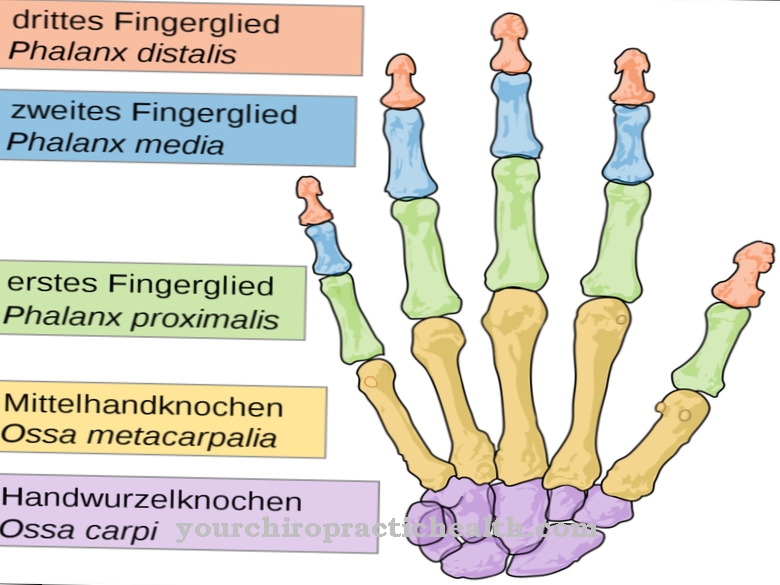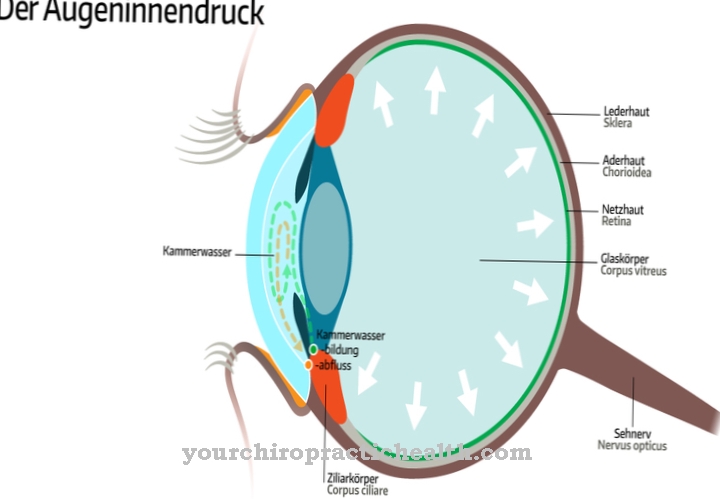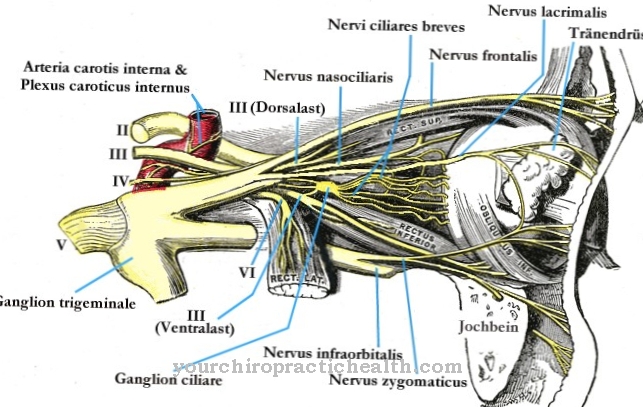During pregnancy, the fetus grows in the mother's womb. There he is from the so-called Amniotic sac that protects him. It bursts under the birth process.
What is the amniotic sac
The Amniotic sac is a fabric bag. It serves as a shelter for the growing fetus in the womb. The embryo forms by the eighth week, which is medically known as embryogenesis. This period, known as the embryonic period, includes the fertilization of the egg, implantation in the mucous membrane of the uterus and the development of the appendages for the organs.
From the third month of pregnancy, the so-called fetogenesis, the amniotic sac develops by folding up the middle and outer cotyledons. It consists of two membranes, called the amnion and the chorion. These skins are two thin but very stable membranes. They grow with the fetus until birth and give it its own space in which it can develop.
This space is filled with amniotic fluid. This serves to ensure that the tissue of the amniotic sac does not grow together with the developing embryo and later with the fetus. The amniotic fluid has a volume of approx. One to 1.5 liters by the time you are born. During childbirth, the amniotic sac tears and the amniotic fluid leaks out.
Anatomy & structure
The amniotic sac is formed from two membranes from the eighth week of pregnancy. The inner membrane is called the amnion. It surrounds the amniotic fluid and the fetus. The outer one is called the chorion. It is part of the placenta and connected to it by the umbilical cord. The exchange with the mother takes place via the chorion. The amniotic sac has no vessels. It is very thin, but extremely durable.
The amniotic fluid is a clear liquid made up of water, potassium, sodium, proteins, fat and glucose. It completely surrounds the fetus and is formed on the inner wall of the amnion. The further the pregnancy progresses and the more the child develops, the higher the proportion of other substances in the amniotic fluid.
For example, the fetus loses hair and flakes of skin. Therefore it is renewed every three hours. From the twelfth week the fetus begins to drink the amniotic fluid. In this way, it trains the lungs and digestive system. In this way, the child gives off the first urine in the womb.
Tasks & functions
The functions of the amniotic sac can be summarized as a protective membrane for the fetus. It absorbs shocks from the fetus and from outside. At the same time, it protects against noise that only reaches him at a muffled level. It is also a barrier for germs to penetrate. So it should protect against infections.
Another task of the amniotic sac is the exchange of the amniotic fluid and the removal of pollutants. As the pregnancy progresses, the amount of amniotic fluid also increases so that the fetus continues to be completely surrounded by the fluid. The amniotic sac ensures an increase in production from the 15th week of pregnancy at the latest. As the fetus begins to drink the amniotic fluid, increasing the amount of water is essential.
The amniotic sac takes on an important and final function at birth. If it bursts, it sets the starting signal for the birth. In the normal case, the rupture of the bladder is spontaneous. It happens in conjunction with labor and can happen at different times.
If it starts before labor, the doctors speak of a premature rupture of the bladder. If it happens at the beginning, it is categorized as early. If the water runs out at the end of the opening phase, it will come on time. It is classified as late if it remains intact until the expulsion phase or even survives the birth. In order to speed up the birth process, it is also advisable in some cases to burst the amniotic sac. This is called bursting of the bubbles.
The color of the amniotic fluid also indicates whether the child is overripe. If it is colored green, the birth is initiated so as not to endanger the child or the mother.
Illnesses & ailments
The amniotic sac normally only opens during childbirth. It becomes problematic when the bladder ruptures prematurely. This happens when the amnion ruptures. Depending on the point in time, it can pose a risk to pregnancy. The cause of this is often an infection in the woman's genital area that travels to the uterus.
In half of the cases, the child is born within the 48 hours following the rupture of the bladder. One complication of the loss of amniotic fluid is a higher susceptibility to infection. Depending on the week of pregnancy, the fetus can develop malformations of the lungs. In addition, his freedom of movement is restricted. The greatest risk is that of miscarriage or premature birth when labor is triggered.
Chorioamnionitis, which is given the medical term, is inflammation of the membrane of the amniotic sac, which can spread to the amniotic fluid. Their incidence is low, with one to five percent of all pregnancies. It is caused when bacteria from the mother's rectum enter the vagina and reach the amniotic sac. If it occurs, it can not only lead to premature birth or miscarriage of the child, but also cause blood poisoning in the mother.













.jpg)

.jpg)
.jpg)











.jpg)